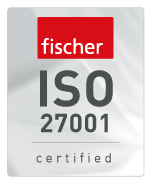The project in a nutshell
- Automated plant documentation with TIM
- Complete documentation created as WebApp
- Cooperation between technical editors and service
- Affiliated companies linked to shared document pool
- Documentation generation driven by parts lists
- TIM filters out SAP parts lists and checks for completeness
Coperion is a worldwide market and technology leader in compounding systems, feeding and weighing, bulk material handling and services. Coperion is a partner for corporations with global operations as well as small and mid-sized companies in the plastics, chemical, food and aluminum industries.
"Thanks to the user-friendly interface and the high functionality of TIM, the technical editors at Coperion were able to carry out the changeover and establish a working routine within a short period of time. A particular advantage for our internal and external customers is that we can now publish interim results of our documentation flexibly and with minimum effort.These are often requested during the assembly and commissioning of plants. Introducing the content management system TIM was an important step for us."
Magali Baumgartner Head of Documentation, Coperion GmbH
Coperion previously used a proprietary SGML-based content management system to generate customer documentation that was strongly geared to Coperion's IT system landscape. However, as this system had not been developed further, it had its limitations. Coperion therefore decided to replace it with the content management system TIM.
TIM goes beyond departmental boundaries: Not only technical editors, but also the service department can work with TIM to create training documents for internal and external target groups. This means that TIM can be used as a shared document pool. Editorial teams at sister companies can also be given access to the system. This way, the information in training manuals will be consistent with user documentation.

Complete documentation (WebApp) is created from Coperion's proprietary operating manuals (XML), its extensive supplier documentation (PDF) and project documents (PDF). Service and training manuals are derived from this documentation. Machine and plant documentation is, to a large extent, generated automatically using order-specific information. It is merged automatically in TIM from the documentation for the units installed in the plant. In TIM terms, this means that the publications are generated from a system master DCL and associated aggregate master DCLs.

Coperion applies order-specific filtering of SAP parts lists and their material numbers to generate documentation from parts lists using the content management system TIM. The relevant XML modules that describe an order result from a process that involves filtering and assembling all material numbers in the parts list. What matters here is that the lists are checked for completeness. Material numbers that are used for the first time are displayed in the filter dialog to the editor, who then classifies them and if necessary allocates them to a module.

